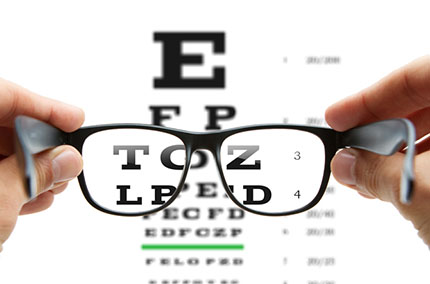Treatments of Poor Vision
What is low vision?
Low vision is a loss of eyesight that makes everyday tasks difficult. A person with low vision may find it difficult or impossible to accomplish activities such as reading, writing, shopping, watching television, driving a car or recognizing faces.

Low vision can be caused by eye diseases, such as macular degeneration, glaucoma, diabetic retinopathy and retinitis pigmentosa. It can also be caused by eye injuries. These conditions can occur at any age but are more common in older people. However, normal aging of the eye does not lead to low vision.
With low vision, you cannot see well enough to do everyday tasks — even with regular glasses, contact lenses, medicine or surgery. There are many signs of vision loss: finding it difficult or impossible to read, write, shop, watch television, drive a car or recognize faces. It may be difficult to set dials or manage glare.
To help diagnose low vision, the complete eye exam usually begins with questions about your medical history and any vision problems you might be experiencing. It also involves a number of tests designed to evaluate your vision and check for eye diseases. Your doctor may use a variety of instruments, aim bright lights directly at your eyes, and ask you to look through an array of lenses.
Losing vision does not mean giving up your activities, but it does mean applying new ways of doing them. There are numerous tools, techniques and resources for people with low vision, including low vision aids and low vision rehabilitation.
There are numerous tips and devices to help you remain independent with low vision, including making things brighter and bigger, reorganizing your home or work environment, using audio books and devices and more.
Make things brighter by:
- Improving lighting. Use a gooseneck lamp directed onto your task. Carry a penlight.
- Reducing glare. Indoors, cover wood tables and shiny counters; wear yellow clip-on or fit over glasses. Outdoors, try dark yellow or amber glasses. Visors can be useful indoors or out.
- Increasing contrast. Use a black ink gel or felt pen, not a ballpoint. Draw a dark line where you need to sign. Use a white cup for coffee, for example.
Make things bigger by:
- Moving closer. Sit close to the TV, and up front at performances.
- Get large checks, large-print playing cards, bingo cards, crosswords, phone dials, TV remotes, calendars, keyboards, and books.
- Low vision magnifiers come in many powers and types, suited to different people and different tasks: hand-held for price tags and menus, stands and video magnifiers (CCTVs or closed circuit TVs) for sentences, magnifying computer mouse.

